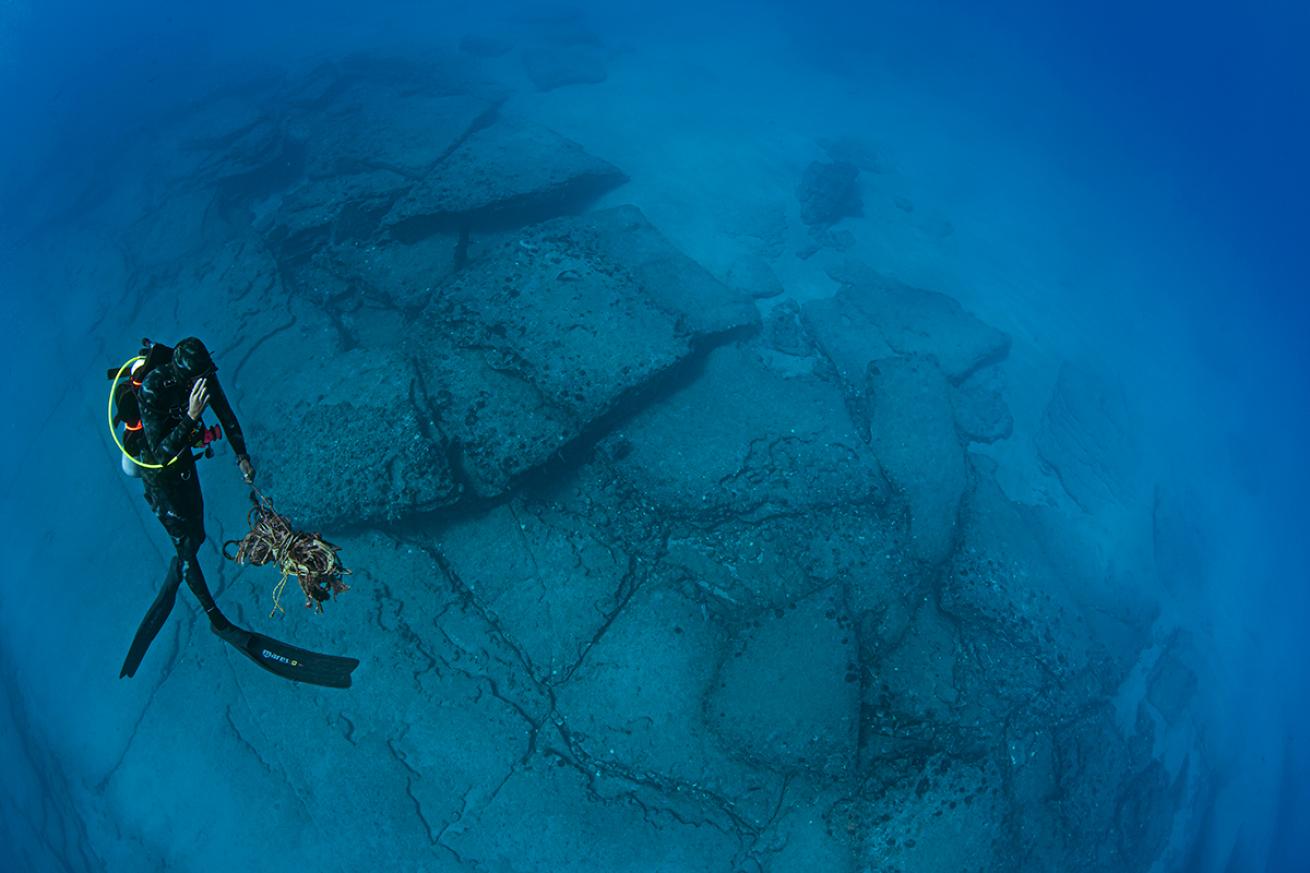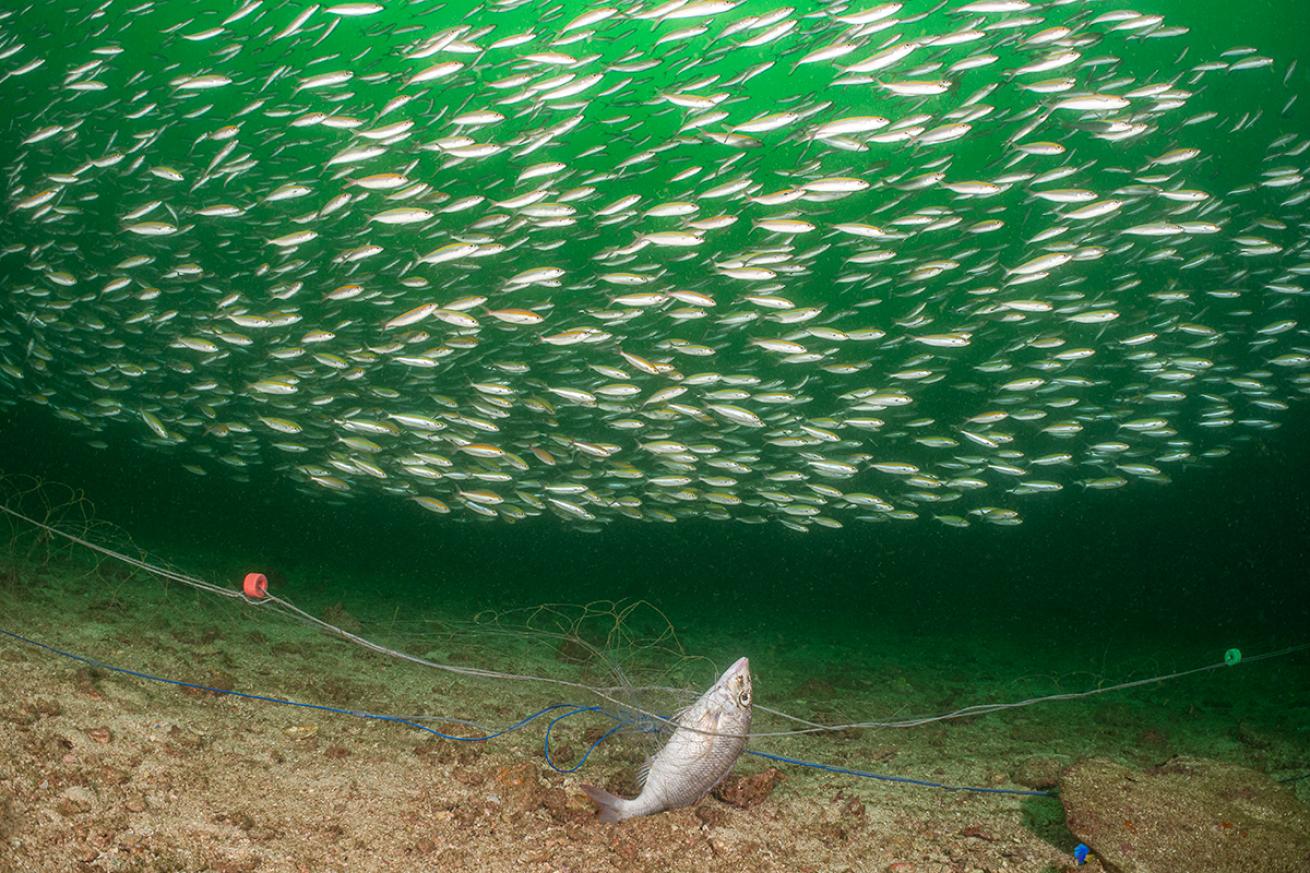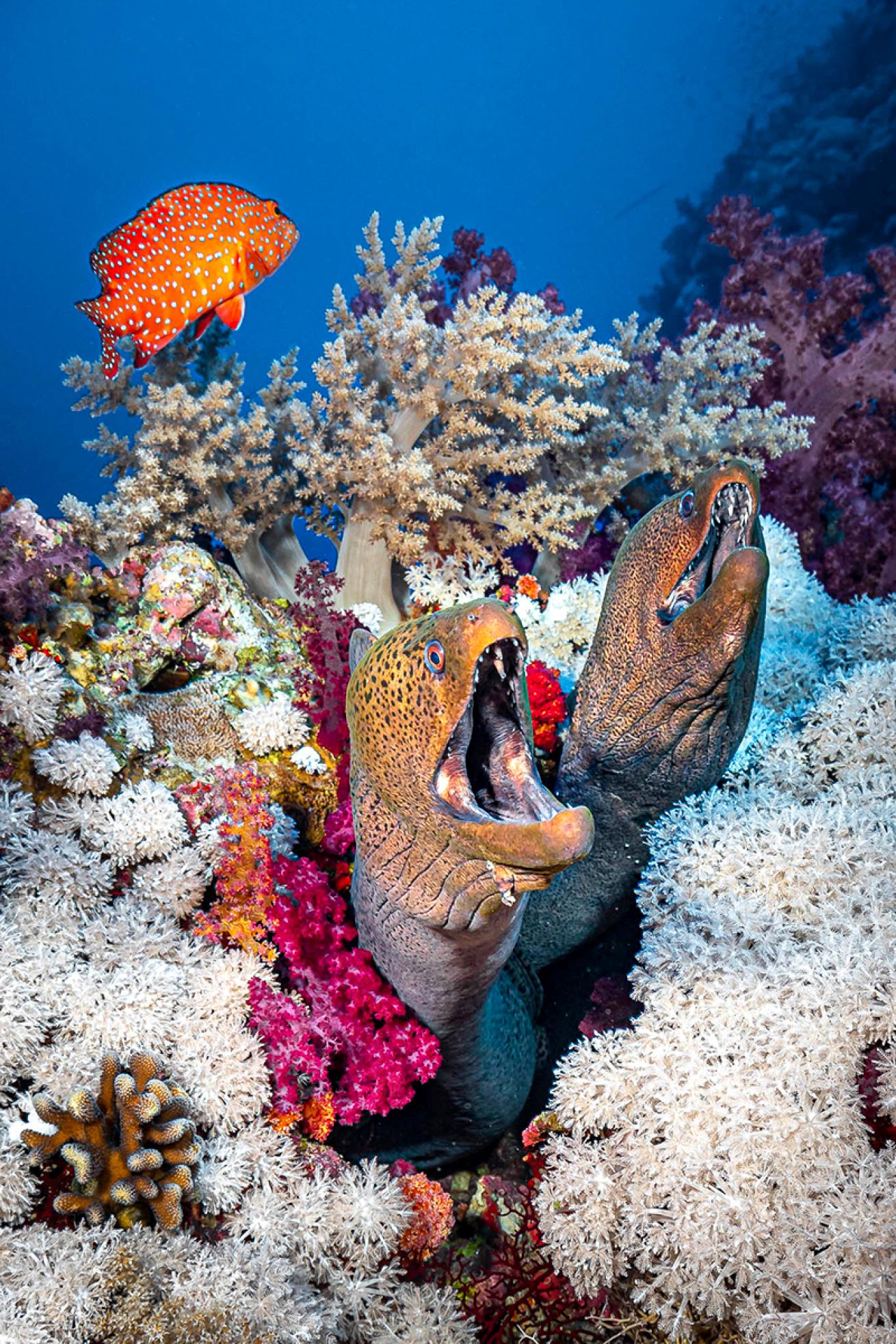10 Great Citizen Science Dives

Tobias FriedrichA diver surfaces from a debris dive in Mexico’s Cabo Pulmo National Park with a discarded anchor and rope.
1. Coral Restoration Workshops
Learn how to maintain a coral nursery, propagate and outplant corals onto existing reefs with a hands-on coral restoration course. Organizations across the world, such as the Coral Restoration Foundation in Florida, Reef Renewal Bonaire, and Blue Corner Marine Research in Indonesia, allow divers to participate in these specialty workshops. “Not only do divers learn new skills, but they also play an active role in restoring populations of critically endangered coral species,” says Sanne Tuijten, of Reef Renewal Bonaire.
2. Fish Counts
You can contribute to the Reef Environmental Education Foundation’s Volunteer Fish Survey Project on any dive. Simply take a slate with you, record the species you see and how abundant the population is in the area, and upload your findings to REEF’s database. All data is made publicly available for scientists, policymakers, students or anyone else who wants to use it. Each July, REEF holds its Great Annual Fish Count—divers host events to involve their community in fish counting and raise awareness about local biodiversity.
3. Citizen Science Liveaboards
Level up your next vacation with a citizen science liveaboard, where you can learn directly from biologists, assist in scientific processes, and get up close with marine life.
“The greater understanding of what you are seeing underwater is so valuable,” says Simon Hilbourne, of Manta Trust. “People connect and fall in love with these animals and the marine ecosystem.”
Whether you’re cleaning sea urchins off reefs with All Star Liveaboards in the Bahamas, tagging sea turtles with Turtle Island Restoration Network off Cocos Island, or identifying rays on a Manta Expedition in the Maldives or Mexico, you’re sure to have a memorable trip.
4. Dive Against Debris
Take cleanup dives a step further by reporting what you find through PADI AWARE’s Dive Against Debris. Logging the type, quantity and location of the trash you collect provides valuable information to experts searching for solutions to sea pollution. By participating, you’re “creating a marine conservation culture that influences the actions of those around you and increases your perspective to discover and report issues most people consider out of sight and out of mind,” says Jack Fishman, of PADI AWARE.
5. Lionfish Hunts
Lionfish are beautiful yet destructive invasive fish that are taking over reefs in Florida and the Caribbean. However, they are easily speared and removed by divers as they’re slow-moving and don’t spook when approached. Many operators offer lionfish-spearing dives; during summer, lionfish-hunting derbies are held throughout Florida. The best part? Lionfish are tasty, so if you avoid their venomous spines while filleting, you earn a free meal for fighting an invasive fish.
6.Ghost Net Removal

Claudio ContrerasIf not removed, ghost gear can ensnare marine life.
Nets, traps and lines that have been discarded at sea are often called “ghost” fishing gear because they can kill marine life long after humans stop using them. Organizations such as California’s Ocean Defenders Alliance enlist divers to help with large-scale ghost gear removal.
You can remove discarded fishing gear on recreational dives too, with the right tools. Kurt Lieber, of Ocean Defenders Alliance, recommends carrying a small line cutter and a sharp, serrated folding knife. “If you have these two tools in your arsenal, you will be able to safely remove small pieces of net and fishing lines,” Lieber says.
7. Diving Marine Protected Areas

Tobias FriedrichA pair of eels takes advantage of an MPA in Egypt.
Many marine protected areas require a small entry fee—usually between $2 and $25—that goes directly to conservation measures and MPA management.
The World Resources Institute estimates there are over 400 MPAs across the world, so no matter where you want to dive, you can find a site and feel good that your dive fee is used to keep the area pristine.
8. Photo Databases
You don’t have to be a professional photographer for your underwater photos to make a difference. Crowdsourced species identification and documentation platforms—to which you can upload your photos after any dive—help scientists track marine life, informing policy and conservation efforts.
While some databases like MantaMatcher, IDtheManta and the Wildbook for Whale Sharks request photos of specific species, you can upload any sightings on an app such as iNaturalist.
9. Vacation Apprenticeships
Ever wish you were a marine biologist? Get a taste of life in the field by volunteering as a citizen scientist with a research facility like Little Cayman Research Centre or Gili Shark Conservation. Depending on how much time you have, these apprenticeship opportunities can last between one and six weeks, with room and board included. You’ll have the chance to dive daily, collect data on the local environment, learn from scientists, and experience what it’s really like to live and work in paradise.
10. Aquarium Volunteering
Many local aquariums have volunteer programs for divers to maintain habitats, assist with animal feeding and give educational presentations to visitors. Although there are some aquariums, like the Georgia Aquarium, that allow guests to dive, most volunteer programs require a regular commitment.
You can find volunteer opportunities throughout the United States at places such as the Aquarium of the Pacific in Long Beach, California; Shedd Aquarium in Chicago; the Tennessee Aquarium; and the North Carolina Aquarium. Contact your local aquarium to inquire about programs near you.










